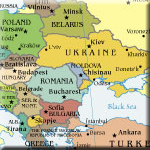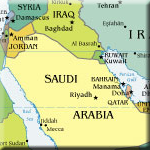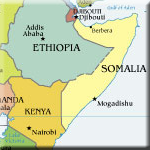




Since the end of the Second World War the world has been anything but peaceful. According to one count (1), at least 250 military conflicts have erupted during the period 1945 - 2003, mostly in the form of civil wars, killing around 90 million people. The social and economic consequences of many of these conflicts were nothing short of catastrophic.
Cases where international diplomacy has been successful in preventing the eruption of military conflicts are extremely scarce. The threat of civil war in Macedonia has been reduced to a great extent, and the risk of renewed war between India and Pakistan has decreased. Other examples are difficult to find. More successful were recent efforts by the international community to ensure the physical survival of the victims of war.
In that respect, the actions following the Second World War may be qualified as a revolution in international relations: instead of turning the losing countries, mainly Germany, into rural subsistence economies, as was seriously proposed at the time, the United States and its Western allies decided to redevelop Western Europe and Japan as part of their strategy to contain Soviet expansion. This policy found its most prominent expression in the famous Marshall Plan, initiated in 1947 by then Secretary of State George C. Marshall, and voted into law by the U.S. Congress in April 1948.
This was the first, and until today most successful program of post-conflict economic recovery and deserves some discussion.
The Marshall Plan was built on three pillars: instructions on economic policy, technical assistance, and provision of capital. The economic policy package was simple and straightforward: it insisted on a balanced Government budget, monetary restraint to ensure a stable currency, and the development of free markets.
Technical assistance was concentrated on very intensive training and visit programs for numerous branches of manufacturing industry, with a view to make these industries Internationally competitive.
Lastly, the amount of capital provided was significant: $13.3 billion (nearly $100 billion at today’s prices) corresponding to 1.5% of U.S. economic output over the four years 1948-1951. It was sufficient to relieve critical shortages in foreign exchange, and allowed the importation of up-to-date production equipment, spare parts and raw materials.
The Plan was enormously successful, more successful than any reconstruction and recovery program ever since.
One reason for the success of the Plan was its simple but well balanced design: the economic policy package could not succeed without a minimum of financial support, and a successful revival of industry required a stable economic environment and access to some foreign exchange.
Another reason for the Plan's success was the population of Europe: the survivors of the war were poor, but educated; there was a literate, well trained and disciplined labour force; and there were enough highly educated people to manage the economy and administer the state in its various aspects. All those people had one common goal: to get wealthy again, or at least as comfortable as they had been before the war. Most of them had also understood that violence was not an efficient method to resolve conflicts.
Lastly, the institutions that together make up a modern society had been heavily damaged, but not destroyed. There was a body of laws and regulations readily available; a functioning civil service to administer these rules could be fairly easily re-established; courts of law to adjudicate disputes could be staffed with experienced judges, and law enforcement was constrained more by the scarcity of funds than the availability of lawyers and policemen.
These reasons for the success of the Marshall Plan go a long way to explain why recent efforts to rebuild a society and its economy after armed conflict have produced very uneven results. Virtually all armed conflicts since 1945 have occurred in poor, less developed countries where systems of education and governance are generally weak. These systems have frequently suffered disproportionally severe damage in prolonged conflicts, leaving a huge gaping hole in lieu of the foundation for future development, and few people to build this foundation. Many, if not most, qualified people have been killed or have emigrated during the conflict. Mechanisms for non-violent conflict resolution, in many cases weak to begin with, have frequently collapsed at state level and have been replaced by traditional tribal systems, or even at the level of the extended family. Such systems frequently encourage rather than restrain inter-ethnic warfare. As a result, about half the countries that were affected by war since 1945 experienced within a few years a recurrence of armed conflict, frequently more than once (2).
Is it worth trying to help these countries under these circumstances and with such a high risk of failure? Why doesn't one leave these people to their mostly self-inflicted suffering?
The answer is twofold: First, the old hands-off attitude is no longer morally acceptable in our part of the world, governed by democracy and human rights. Second, global interdependence has reached such a degree that no part of the world remains unaffected by what happens anywhere else, as demonstrated by the events of September 11, 2001.
The remainder of this book proceeds from the general to the specific. It starts with a short discussion of the problem of war in recent history since the end of the Second World War. It continues with an outline of the fundamental political choices, and their pros and cons that must be made after a major war. Turning then to the specifics of socio-economic recovery, the book argues in favour of rational planning and sets forth a list of priority areas to be addressed. Subsequent chapters discuss these areas in more detail: public institutions, internal security, public finances, issues of economic policy in both post-conflict countries and donor countries, the re-launching of the engines of economic growth in agriculture and other enterprises and, lastly, physical reconstruction in the narrow sense. Following that, the problems of financing and implementing a recovery program are addressed. The concluding chapter highlights the main recommendations that have emerged in the preceding chapters.